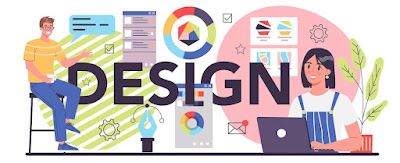1. Introduction: The Evolution of Animation in Web Design
In today's digital landscape, animation has become an integral part of modern website design Los Angeles, captivating users and enhancing their browsing experiences. From the early days of Flash to the emergence of CSS and JavaScript animations, the role of animation has evolved significantly. It has transitioned from being a mere decorative element to a powerful storytelling tool, improving navigation and interactivity. This article explores the various types of animation used in web design, delves into the benefits it offers for user experience, discusses best practices for implementation, and provides a glimpse into the future of animation in web design.
1.1 The rise of animation in web design
Animation has come a long way in the world of web design. Gone are the days of static, lifeless websites that barely held our attention. Now, we live in an era where animation takes center stage, adding a touch of life, movement, and personality to websites.1.2 Historical overview: From Flash to modern CSS and JavaScript animations
In the early days of web design, Flash was the go-to tool for adding animation. It allowed designers to create interactive and visually stunning websites. However, with the rise of mobile devices and the decline of Flash support, a new era of animation began.Nowadays, web designers rely on modern CSS (Cascading Style Sheets) and JavaScript animations to bring their designs to life. CSS animations offer a lightweight and easily customizable option, while JavaScript animations provide interactivity and enable complex effects. With these tools, the possibilities for web animation are endless.
2. Enhancing User Experience: The Benefits of Animation
2.1 Engaging and captivating users
Animation has the power to grab users' attention and keep them engaged. With carefully crafted animations, websites can create a sense of delight and surprise, making users want to explore further. Whether it's a subtle hover effect or a full-blown animated transition, the right animation can make a website truly captivating.2.2 Guiding user attention and focus
Animation can also be used as a guiding tool, directing users' attention and focus to important elements on a webpage. Whether it's a subtle highlighting of a button or a visually prominent scrolling indicator, animations can help users navigate through a website with ease and confidence.2.3 Creating a memorable and immersive experience
One of the key advantages of animation in web design is its ability to create a memorable and immersive experience. By weaving animations seamlessly into the user interface, websites can leave a lasting impression on visitors. From animated backgrounds to interactive elements, animations can transform a website from a mere collection of pages into a truly immersive digital journey.3. Types of Animation in Web Design: From GIFs to CSS and JavaScript
3.1 Animated GIFs: Simple and widely supported
Animated GIFs have a special place in the world of web animation. They are simple, easy to create, and widely supported across different browsers and platforms. Whether it's a funny cat gif or a subtle loading animation, GIFs add a touch of dynamism to web design.3.2 CSS animations: Lightweight and easily customizable
CSS animations offer a lightweight and flexible way to bring motion to web elements. With CSS, designers can create smooth transitions, keyframe animations, and even complex effects. From a fading button to a bouncing logo, CSS animations give designers the power to bring their ideas to life with ease.3.3 JavaScript animations: Interactivity and complex effects
JavaScript animations take web design to the next level. With JavaScript, designers can create interactive and dynamic animations that respond to user input. From scrolling effects to parallax animations, JavaScript opens up a world of possibilities for creating immersive and engaging web experiences.4. Animation as a Storytelling Tool: Creating Engaging Narratives
4.1 Using animation to convey emotions and narratives
Animation has a unique ability to convey emotions and tell stories. By using motion, timing, and visual elements, web designers can create animated narratives that evoke specific feelings and resonate with users. Whether it's a storytelling website or a product demo, animation adds that extra layer of emotional connection.4.2 Incorporating animated characters and mascots
Adding animated characters or mascots to a website can inject personality and charm. These animated elements can guide users, provide assistance, or simply entertain. From a friendly cartoon figure welcoming visitors to an animated pet reacting to user interactions, characters and mascots create a memorable and relatable experience.4.3 Storyboarding and planning animations for storytelling
Just like in the world of filmmaking, storyboarding plays a crucial role in planning and executing animations for storytelling purposes. By sketching out the key frames and transitions, designers can visualize the flow of an animated narrative and ensure a smooth and coherent experience for the users.In conclusion, animation has become an indispensable tool in Modern Website Design Company Miami. It enhances user experience, guides attention, and allows for creative storytelling. Whether it's through animated GIFs, CSS animations, or JavaScript interactivity, animation brings websites to life and makes them more engaging and memorable. So let your creativity shine and embrace the power of animation in your website design company New York endeavors.and Innovations
5. Animating UI Elements: Improving Navigation and Interactivity
Animation
plays a crucial role in enhancing the user experience by improving
navigation and interactivity on websites. By animating UI elements such
as buttons and navigation menus, designers can make the user interface
more intuitive and engaging.
5.1 Animating buttons and navigation menus
Animated
buttons and navigation menus can guide users and provide them with
visual cues on how to interact with the website. For example, when a
user hovers over a button, a subtle animation can be triggered to
indicate its clickable nature. Similarly, animating navigation menus can
make them more discoverable and encourage exploration.
5.2 Microinteractions: Enhancing user feedback and engagement
Microinteractions
refer to small animations that provide feedback to users for their
actions. These animations can range from a simple loading spinner to
indicate progress to a more complex animation that signifies a
successful action. By incorporating microinteractions, web designers can
improve user feedback and overall engagement on the website.
5.3 Scroll animations: Adding depth and visual interest
Scroll
animations are animations that are triggered as the user scrolls down
or up a web page. These animations can be used to add depth and visual
interest to the design. For example, elements can fade in or slide into
view as the user scrolls, creating a more dynamic and captivating
browsing experience.
6. Performance Considerations: Balancing Animation and Loading Speed
While
animation can greatly enhance the user experience, it is important to
balance it with loading speed and performance considerations. Here are
some tips for optimizing animations and minimizing their impact on
loading times.
6.1 Optimizing animations for performance
To
ensure smooth and seamless animations, it is essential to optimize them
for performance. This includes using hardware-accelerated CSS
animations, avoiding excessive animation effects, and optimizing
JavaScript code.
6.2 Reducing file sizes and minimizing impact on loading times
Large
file sizes can significantly slow down a website's loading speed. By
optimizing and compressing animation files, designers can reduce their
impact on loading times. Additionally, using lazy loading techniques can
ensure that animations are only loaded as they become visible to the
user.
6.3 Using animation libraries and frameworks efficiently
Animation
libraries and frameworks provide ready-to-use solutions for web
designers. However, it is important to use them efficiently to avoid
unnecessary bloat and minimize the impact on performance. Carefully
selecting and customizing these tools can help strike the right balance
between animation and loading speed.
7. Animation Best Practices: Tips for Effective Implementation
To create impactful and effective animations, web designers should follow these best practices.
7.1 Keeping animations subtle and purposeful
Animations
should enhance the user experience without overwhelming or distracting
users. Keeping them subtle and purposeful ensures that they contribute
to the overall usability and engagement of the website.
7.2 Ensuring animations are consistent with the brand and overall design
Animations
should align with the brand identity Miami and overall design of the website.
Consistency in style, timing, and behavior helps create a cohesive user
experience and strengthens the brand's message.
7.3 Testing and gathering user feedback for iterative improvements
Like
any design element, animations should be tested and refined based on
user feedback. Conducting usability tests can help identify any issues
or areas for improvement, allowing designers to iterate and enhance the
animations over time.
8. The Future of Animation in Web Design: Trends and Innovations
As
technology advances, new trends and innovations continue to shape the
future of animation in web design. Here are some exciting directions
that animation is heading towards.
8.1 Integrating 3D and virtual reality (VR) animations
With
the rise of virtual reality and 3D technologies, incorporating 3D and
VR animations into web design is becoming more prevalent. These
immersive experiences allow users to interact with websites in a more
realistic and engaging manner.
8.2 Utilizing motion design to create immersive experiences
Motion
design, a combination of animation and graphic design Miami, is gaining
popularity in web design. By using motion and animated elements
strategically, designers can create dynamic and immersive experiences
that capture users' attention and communicate information effectively.
8.3 Exploring interactive storytelling through animation
Animation offers unique storytelling opportunities on the web. By combining interactivity and animation, designers can create interactive narratives that captivate users and convey complex messages in an engaging and memorable way.
In conclusion, animation plays a crucial role in modern web design by improving navigation, enhancing user feedback, and adding visual interest. While balancing animation and loading speed is important, following best practices and considering future trends and innovations can help web designers create captivating and impactful animations. So go ahead, animate away, and bring your web designs to life!As the digital landscape continues to evolve, animation remains a powerful tool for engaging users and creating memorable experiences in web design. By implementing the right types of animation thoughtfully and strategically, designers can enhance user interactions, guide attention, and convey narratives effectively. However, it is crucial to balance animation with performance considerations and adhere to best practices to ensure optimal loading times and a seamless user experience. With advancements in technology and emerging trends, the future of animation in web design holds exciting possibilities. By staying informed and exploring innovative approaches, designers can continue to push boundaries and captivate audiences with dynamic and immersive web experiences.
FAQ
1. How can animation enhance user experience in web design?
Animation can enhance user experience in Website Design Company Philadelphia by engaging and captivating users, guiding their attention and focus, and creating a memorable and immersive experience. It can bring static elements to life, provide visual feedback, and help users understand complex information more easily.2. Are there any performance considerations when using animation in web design?
Yes, there are performance considerations when using animation in web design. It is important to optimize animations for performance by reducing file sizes, using efficient animation libraries and frameworks, and minimizing the impact on loading times. Striking a balance between engaging animations and maintaining fast loading speeds is crucial for a seamless user experience.
3. What are some best practices for implementing animation in web design?
Some best practices for implementing animation in web design include keeping animations subtle and purposeful, ensuring they are consistent with the brand and overall design, and testing and gathering user feedback for iterative improvements. It is important to use animations thoughtfully, considering their impact on usability and accessibility.
4. What does the future hold for animation in web design?
The future of animation in web design is promising, with advancements in technology and emerging trends. We can expect to see more interactive and immersive experiences, innovative use of augmented reality and virtual reality, and seamless integration of animation with other design elements. Designers will continue to push boundaries and explore new possibilities to captivate audiences and create compelling web experiences.



0 comments: